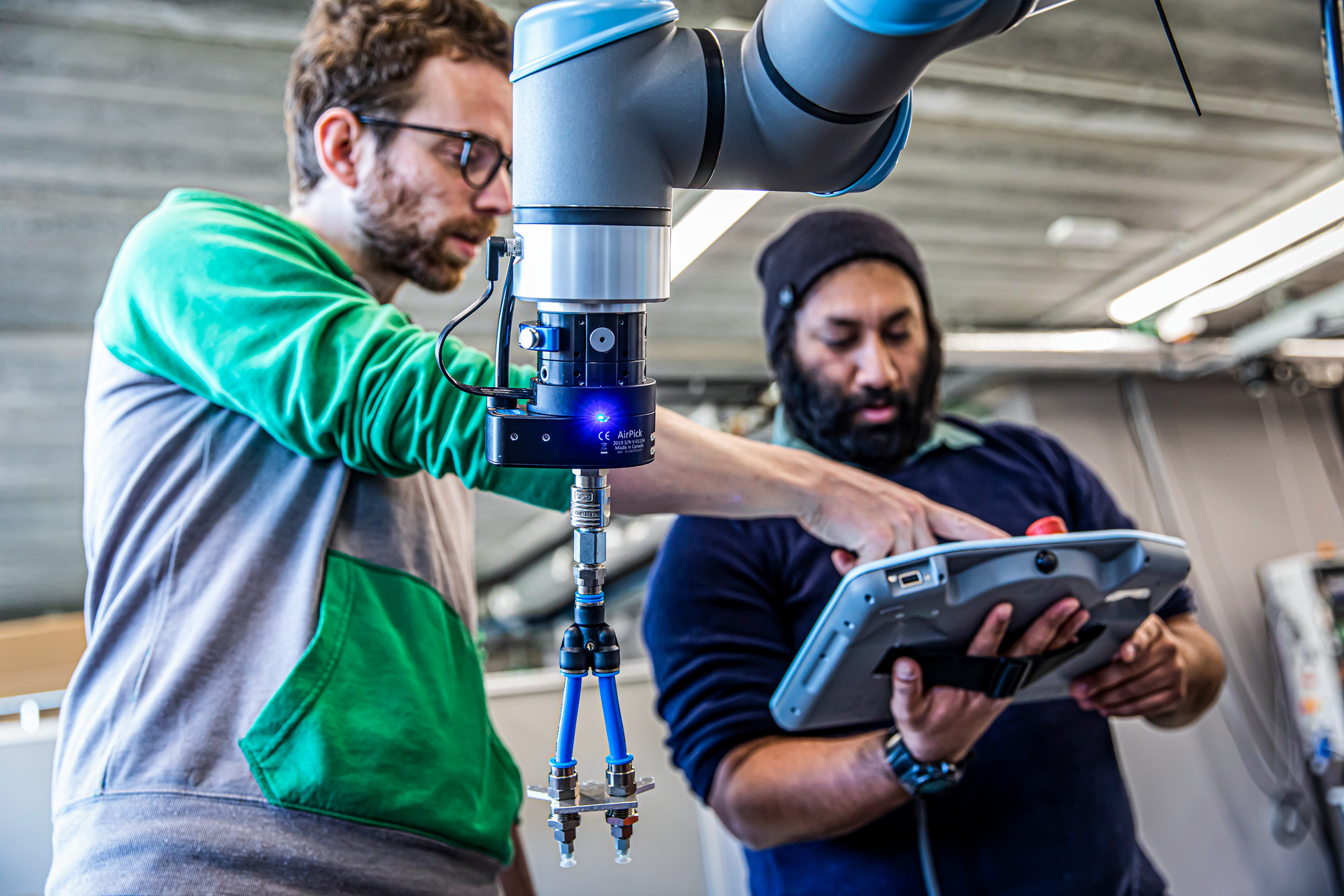Human-robot collaboration
We combine engineering expertise from robotics and artificial intelligence with sociology and human sciences to improve the productivity and reduce the cognitive and physical stress of factory workers.

What do we offer?
Challenges
Collaborative workcells, where robots work side-by-side with their (human) operators, are one of the ways to achieve mass customisation of complex products. This technology is highly suited when human flexibility and adaptability are key in some critical parts of the manufacturing process. However, this kind of collaboration comes with several challenges, such as:
- Communication between operator and robot.
- Task-specific robot programming.
- Design of layout of ergonomic collaborative work cells.
- Balancing productivity with safety.
Solutions
By offering proof-of-concept demonstrators, we allow you to gauge feasibility, validate the cost-benefit analysis and ensure technology acceptance. We build on an extensive range of cobots to support state-of-the-art technology development and high-TRL validation:
- Methods and algorithms for dynamic multi-objective task allocation, based on CAD-controlled task breakdown and optimally distributing assembly subtasks between humans and cobots.
- Methods for easy, fast, skills-based and intuitive robot programming.
- Constraint-based robot programming for complex robot tasks.
- Controlling robots with AI algorithms for flexibility and learning capabilities.
- Architectures for flexible multi-variant grippers.
- Virtual validation of cobot work cells.
Next to testing the functionality, we can also test physical and mental fatigue in industrial settings, think of ergonomics, cognitive load & stress, etc. Additionally, we provide exoskeletons to physically support operators in situations where ergonomics cannot be improved by optimising the work cell design or through cobot integration. You can test these exoskeletons in a specific use case, both on an ergonomics and technology acceptance level.
Our unique software & hardware
We use various unique software and hardware tools in this process:
- Custom-developed software:
- eTaSL: Our custom-developed task specification language for reactive control of robotic systems
- Web-based environment for skills-based programming
- Robot skills for programming by demonstration
- Virtual world implementation
- Native Robot operating systems (Universal Robots, Kuka, ABB, Staubli, Fanuc…)
- Generic skills-based control framework based on ROS, DDS
- AI-based control framework
- Motion planning: convergent IT: Automappps
- Cobots, robots, AGV’s, exoskeletons from several suppliers.
Customer success story
Improving the gluing process on an Audi car door.
Problem
Audi wanted to improve the speed and accuracy of the quality control for a gluing process on car doors. The process was carried out manually and operators could only check a few points. The quality control was therefore sub-optimal so that a door had to be destructively investigated on a regular basis to guarantee the quality of the gluing process.
Solution
A cobot is positioned above the door. The robot gripper has a built-in sensor that can guarantee the quality of the glue. An operator shows the cobot where the door is and then the cobot can automatically follow the door contours and verify the quality of the adhesive process.
Customer value
Our solution (achieved in an ICON project) ensures that the gluing process can now be monitored with a cobot over the entire door contour. The process is faster, more accurate and more ergonomic for operators. It saves the company +/-€5000/week, reduces CO2 emissions and results in an immediate quality control.